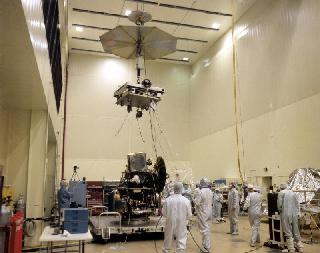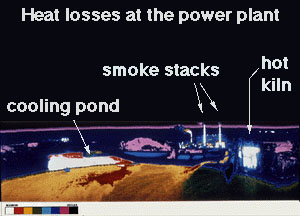Exploratour: NASA's Exploration for Life
Potential studies include using an instrument called a radar sounder to bounce radio waves through the ice, the Europa Orbiter sciencecraft would be able to detect an ice-water interface, perhaps as little as 1 km below the surface. Other instruments would reveal details of the surface and interior processes. Scientists and engineers have the difficult task of designing a spacecraft to perform just the right studies to determine where to drill on the next flight, without designing a spacecraft that is too heavy to be launched from the Earth. Some of the potential experiments are listed below:
- A camera to produce daily images of Europa?
- A laser altimeter to bounce beams of light off of the surface to measure the depth of a potential ocean/crust interface?
- A thermal emission spectrometer to scan for heat emitted from the surface?
- A magnetometer to study the magnetic properties of Europa to gain
insight into the interior of the moon?
- € detect currents circulating in a salty ocean
- A relay antenna to receive data transmitted to the orbiter from future spacecraft that will land on the surface? An analysis of radio signals sent to Earth will reveal the precise shape of the moon.
- A mass spectrometer to detect vents of volatiles being released?
- Radar Sounder to find thin spots in the ice?
- can only estimate thickness because properties of the material are needed which are unknown, such as the index of refraction
- need accurate composition, including content of small particles
- need particle size distribution & impurity
This is page 17 of 20












